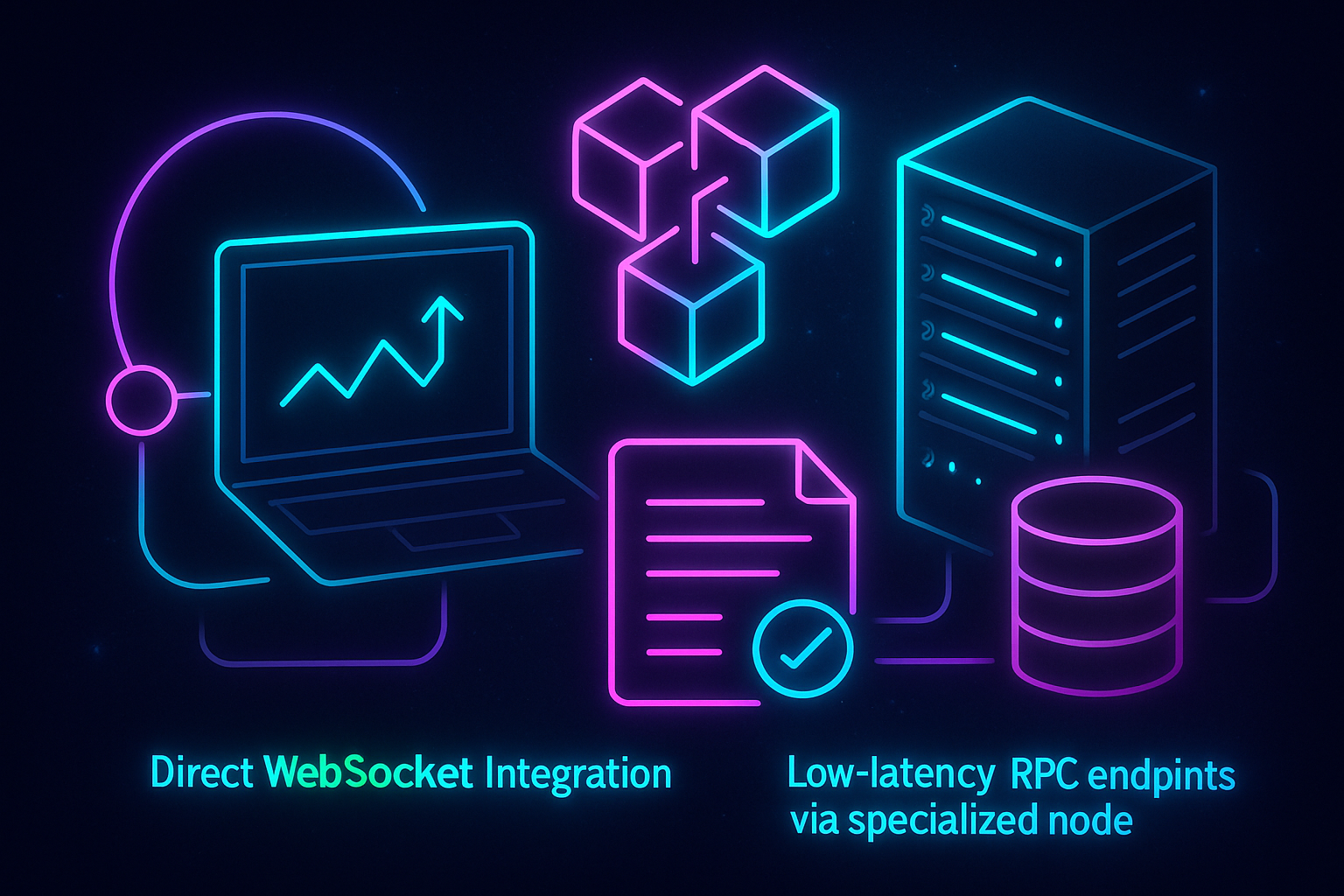
Ultra-low latency trading isn’t just a buzzword in DeFi anymore, it’s the competitive edge that separates winning strategies from missed opportunities. On Hyperliquid-Style Perps DEX, traders are experiencing execution speeds and reliability that rival the fastest centralized exchanges, thanks to a blend of cutting-edge blockchain engineering and smart infrastructure choices. If you’re looking to minimize slippage, maximize efficiency, and stay ahead of volatile perpetual markets, understanding how to optimize for sub-second latency is essential.

Why Ultra-Low Latency Matters in Decentralized Perpetual Trading
In the world of perpetual contracts, every millisecond can impact your entry or exit price, especially when volatility spikes. Latency isn’t just about speed; it’s about consistency and predictability. With Hyperliquid-Style Perps DEX processing up to 200,000 orders per second on its proprietary Layer 1 blockchain, traders can finally access the kind of real-time execution that was once exclusive to traditional finance’s elite.
The push for ultra-low latency is driven by three core needs:
- Reducing Slippage: Fast execution ensures your orders fill at expected prices, not at an unfavorable drift.
- Enabling Advanced Strategies: High-frequency trading (HFT) and market making require instant feedback loops between market data and order placement.
- Risk Management: Real-time data empowers tighter stop-losses and more agile position adjustments during market turbulence.
The Top Three Optimizations for Ultra-Low Latency Trading on Hyperliquid-Style Perps DEX
Top Strategies for Ultra-Low Latency on Hyperliquid-Style Perps DEX
-

Direct WebSocket Integration for Real-Time Market Data and Order ExecutionIntegrate directly with Hyperliquid’s WebSocket API to access live order book updates and execute trades instantly. This minimizes delays compared to REST APIs, ensuring your trading algorithms react to market changes in real time.
-

Utilization of On-Chain Order Matching with Optimized Smart ContractsLeverage Hyperliquid’s on-chain order matching engine and optimized smart contracts, designed for sub-second finality and high throughput. This reduces settlement latency and enhances transparency, giving you a speed edge without sacrificing security.
-

Deployment of Low-Latency RPC Endpoints via Specialized Node ProvidersConnect to low-latency RPC endpoints using specialized providers like QuickNode or Alchemy. These services offer robust, geographically distributed infrastructure, reducing network lag and ensuring your orders reach the blockchain faster.
If you’re serious about achieving lightning-fast trades on this fastest decentralized perpetual exchange, focus on these three technical pillars:
1. Direct WebSocket Integration for Real-Time Market Data and Order Execution
The first step toward minimizing execution delays is integrating directly with Hyperliquid’s WebSocket APIs. Unlike REST APIs, which require repeated handshakes, WebSockets maintain a persistent connection that delivers tick-by-tick market data instantly. This means you’ll see order book updates, trade prints, and funding rate changes as soon as they happen, no lag or polling intervals involved.
This direct feed is crucial if you’re running high-frequency bots or executing large orders where even tiny price shifts matter. Many professional traders report that switching to WebSocket-based setups has reduced their round-trip order times by several hundred milliseconds, a lifetime in crypto markets.
2. Utilization of On-Chain Order Matching with Optimized Smart Contracts
A unique aspect of Hyperliquid-Style Perps DEX is its use of highly optimized smart contracts for on-chain order matching. Instead of relying on slow block confirmations or off-chain intermediaries, trades are matched directly within the protocol using efficient logic designed to minimize computational overhead. This architecture not only slashes latency but also enhances transparency, you can verify every match in real time via the blockchain explorer.
The result? Your trades are executed at near-instant speeds without sacrificing decentralization or security. For algorithmic traders who depend on deterministic outcomes (and want to avoid MEV exploitation), this setup is a game changer.
Deploying Low-Latency RPC Endpoints via Specialized Node Providers
No matter how fast your code runs locally, network bottlenecks can ruin your edge if you’re connecting through generic public endpoints. That’s why deploying low-latency Remote Procedure Call (RPC) endpoints, ideally via specialized node providers, is critical for serious DeFi traders. These providers offer geographically distributed nodes optimized for rapid transaction relays and minimal jitter, ensuring your orders hit the blockchain faster than those routed through congested public gateways.
Specialized node providers can also offer advanced monitoring, real-time failover, and priority access to the network, which are all vital for maintaining consistent low-latency performance. By strategically selecting a provider with nodes close to your trading server’s location, you shave precious milliseconds off your order submission and confirmation times. In a market where bots and arbitrageurs are constantly vying for the best fills, this infrastructure investment pays off in both tighter spreads and higher execution reliability.
Let’s break down how these three strategies work together in practice:
Top Strategies for Ultra-Low Latency Trading on Hyperliquid-Style Perps DEX
-

Direct WebSocket Integration for Real-Time Market Data and Order Execution: By connecting directly to Hyperliquid’s WebSocket API, traders receive instant market updates and can execute orders without waiting for slow HTTP polling. This enables sub-second reactions to price changes, essential for high-frequency and algorithmic trading strategies.
-

Utilization of On-Chain Order Matching with Optimized Smart Contracts: Hyperliquid leverages its custom Layer 1 blockchain and highly optimized smart contracts for on-chain order matching. This architecture ensures rapid trade settlement, minimizes miner extractable value (MEV), and provides gasless trading, allowing for fast, cost-effective order placement and cancellation.
-

Deployment of Low-Latency RPC Endpoints via Specialized Node Providers: Using reputable node providers like QuickNode or Alchemy for RPC endpoints reduces network delays and jitter. Proximity hosting and dedicated infrastructure further cut round-trip times, ensuring your trades hit the blockchain as quickly as possible.
Practical Tips for Maximizing Your Edge
Beyond technical integration, your operational setup matters just as much. Here are some actionable steps to further reduce latency:
- Run your trading bots on servers geographically close to Hyperliquid’s core nodes. Colocation isn’t just for Wall Street anymore – DeFi traders can benefit from reduced propagation delays too.
- Continuously benchmark round-trip times from order submission to confirmation. Use real-time analytics tools to spot anomalies or bottlenecks before they cost you profits.
- Stay updated on protocol upgrades. Hyperliquid is rapidly evolving; new features or optimizations could further reduce latency or unlock new strategic opportunities.
If you want a deeper dive into the protocol mechanics that make this all possible, check out our detailed breakdown at How Hyperliquid-Style Perps Achieves Ultra-Low Latency in Decentralized Perpetual Trading.
Adapting Your Strategy for Real-Time Execution in DeFi
The move toward ultra-low latency is more than just a technical arms race – it’s about reimagining what’s possible in decentralized markets. With Hyperliquid-Style Perps DEX pushing boundaries on speed and reliability, traders now have tools that rival (and sometimes surpass) what’s available on centralized platforms. Whether you’re deploying high-frequency strategies or simply want peace of mind during volatile swings, optimizing for low-latency is no longer optional – it’s essential.
The future of perpetual trading lies at the intersection of smart contract engineering, robust infrastructure choices, and real-time data integration. By embracing these three actionable optimizations – Direct WebSocket Integration, On-Chain Order Matching with Optimized Smart Contracts, and Low-Latency RPC Endpoints via Specialized Node Providers – you’re not just keeping pace with the fastest decentralized perpetual exchange; you’re setting yourself up to lead it.






